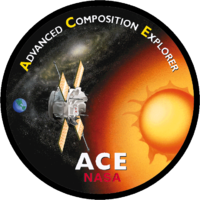
Photo from wikipedia
Hydrogen has been almost completely ignored in studies of the abundance patterns of the chemical elements in solar energetic particles (SEPs). We seek to find impulsive events where H fits… Click to show full abstract
Hydrogen has been almost completely ignored in studies of the abundance patterns of the chemical elements in solar energetic particles (SEPs). We seek to find impulsive events where H fits these abundance patterns and document the events that do not, suggesting possible reasons for the disparity. For 24% of the smaller impulsive SEP events, the relative abundance of H fits within one standard deviation of the power-law fit of the abundances of elements 6≤Z≤56$6 \leq Z \leq 56$, relative to coronal abundances. In impulsive events with high intensities, H can be 10 to 100 times its expected value. In a few of these larger events, increased scattering at high wavenumber may preferentially detain H, perhaps with self-amplified waves; in some events pre-event proton background may contribute. In most large impulsive SEP events, however, associated shock waves must play a much greater role than previously thought; fast (>500kms−1${>}\,500~\mbox{km}\,\mbox{s}^{-1}$) coronal mass ejections contribute to 62% of impulsive events. Shocks may sample protons from the ambient coronal plasma or residual background as well as reaccelerating heavier impulsive SEP ions injected from the region of magnetic reconnection in solar jets. Excess H may be a signature of shock acceleration.
Journal Title: Solar Physics
Year Published: 2019
Link to full text (if available)
Share on Social Media: Sign Up to like & get
recommendations!